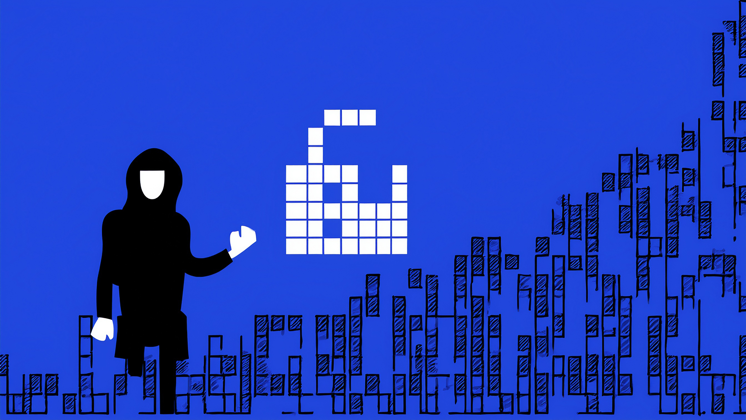When it comes to security threats and fraud risks, we often talk a lot about hackers and people outside of businesses breaking into companies’ networks to steal information and data – but a very, very real threat lies within every single organization.
Threats from employees and other trusted insiders are on the upswing, and businesses need to safeguard against them. Let's look at the different types of insider threats and the warning signs you should be considering.
What is an insider threat? Defined
An insider threat is exactly what it sounds like – a security risk inside your organization. It could be a disgruntled or compromised current or former employee or a business partner or associate who misuses legitimate access to your network.
However, not all insider threat incidents are deliberate – in fact, the most common insider threats come from employees who unintentionally provide access to cybercriminals.
Insider threat statistics
The insider threat is increasing, with 74% of businesses reporting more frequent insider threat cases in 2023 than in previous years, and 48% of businesses believing insider threats are more difficult to detect and prevent than external cyberattacks.
Different types of insider threats
While there are several subsets of insider threats, they fall into two categories – malicious and unintentional.
Intentional insider threats
Otherwise known as a malicious insider threat, this type of insider threat involves deliberate efforts to exploit an employee’s proximity to organizational processes and information. In these cases, an employee, contractor, or third-party business uses legitimate credentials to access – or facilitate access to – sensitive and confidential information with malicious intent, which is what we saw in the case of the National Maritime Museum.
The motivation for a malicious insider attack can vary. For example, it could be a disgruntled employee who wants to sabotage the business to get even for a perceived lack of recognition or reward, or a former employee who feels unjustly treated.
Malicious insiders are incredibly dangerous as they have an advantage over external attackers, given their knowledge of a company’s security policies and procedures – and, as a result, its areas of weakness.
Compromised insider
One subset of malicious insider threats involves criminal coercion. For example, an employee or other person with access may be paid, bribed, or blackmailed to provide access to hackers, competitors, or nation-state actors to cause business disruption, leak customer information, and steal intellectual property and other confidential information.
This can also happen through credential theft, wherein cybercriminals steal the username and password of a targeted individual. They can accomplish this by using tactics like phishing or malware, tactics that artificial intelligence (AI) is helping them turbo-charge.
Research from Ponemon and Proofpoint indicates that credential theft is on the rise, with incidents doubling since 2020 and costing an average of $670,600 per incident.
Unintentional insider threats
Human error accounts for 90% of cyberattacks, and unintentional insider threats are the primary risk for businesses when thinking about insider threats.
Unintentional insider threats aren’t deliberate or malicious, but they account for the vast majority (87%) of insider attacks. Typically they result from negligent or accidental behavior.
Examples of negligent insider activity
Negligent insiders don’t necessarily have malicious intent – however, through carelessness or maybe even a flagrant disregard for security procedures or protocols, they create opportunities for unauthorized access.
Negligent insiders may misplace or lose a company laptop or storage device, ignore software updates and patches, or not follow multi-factor authentication requirements.
To illustrate, research shows that around 50% of people give family and friends access to work-issued devices.
Examples of accidental unintentional insider threats
An accidental unintentional insider threat comes from an insider making a genuine mistake. For example, clicking on a malicious link, inadvertently infecting the business’s systems, or sending confidential or sensitive information to an incorrect email address.
How do you spot malicious insider threats?
Insider threats can be difficult to detect, given that access to sensitive information and systems is genuine – however, there are some things to be on the lookout for.
Key signs that might point to a malicious insider
Accessing systems at unusual times. If, for example, an individual accesses your network remotely late at night or on weekends, it could be a sign of a malicious insider.
Data transfer levels. Unusual levels of information being downloaded or transferred should be investigated.
Activity type. If an individual is accessing information they shouldn’t be or shouldn’t need to, it could point to a malicious insider.
Disgruntled employees. Employees who have, for example, been recently disciplined, not selected for a promotion or a salary increase, or otherwise feel unfairly treated, may be tempted to seek revenge on their employer.
Stressed employees. Similarly, employees who are experiencing financial stress or hardship may be tempted by or vulnerable to approaches to provide unauthorized access to a business’s systems.
Insider threat risk – it’s a people and culture issue, too
Cybersecurity is a company-wide responsibility, and people and culture (that is, HR) departments have a critical role to play. From ensuring everyone within the organization is conscious of and is prioritizing cybersecurity to minimize unintentional cyber threats, to the early identification of people who may pose a malicious insider threat, people and culture can play a key role in helping reduce the insider threats a business faces.
In summary
Insider threat cases are increasing, and are considered more difficult to prevent than external attacks.
Malicious insider threats are extremely dangerous, not to mention challenging to detect and prevent. Employees need access to systems and networks, but this creates vulnerabilities that can be exploited.
Unintentional insider threats are often the byproduct of a lack of awareness and care, and need to be addressed culturally, as well as through the training and communication component of an insider threat program.
By taking positive steps to understand your business’s critical assets and the protections in place around them, businesses can begin to tackle the very real risks that come from insider threats.







